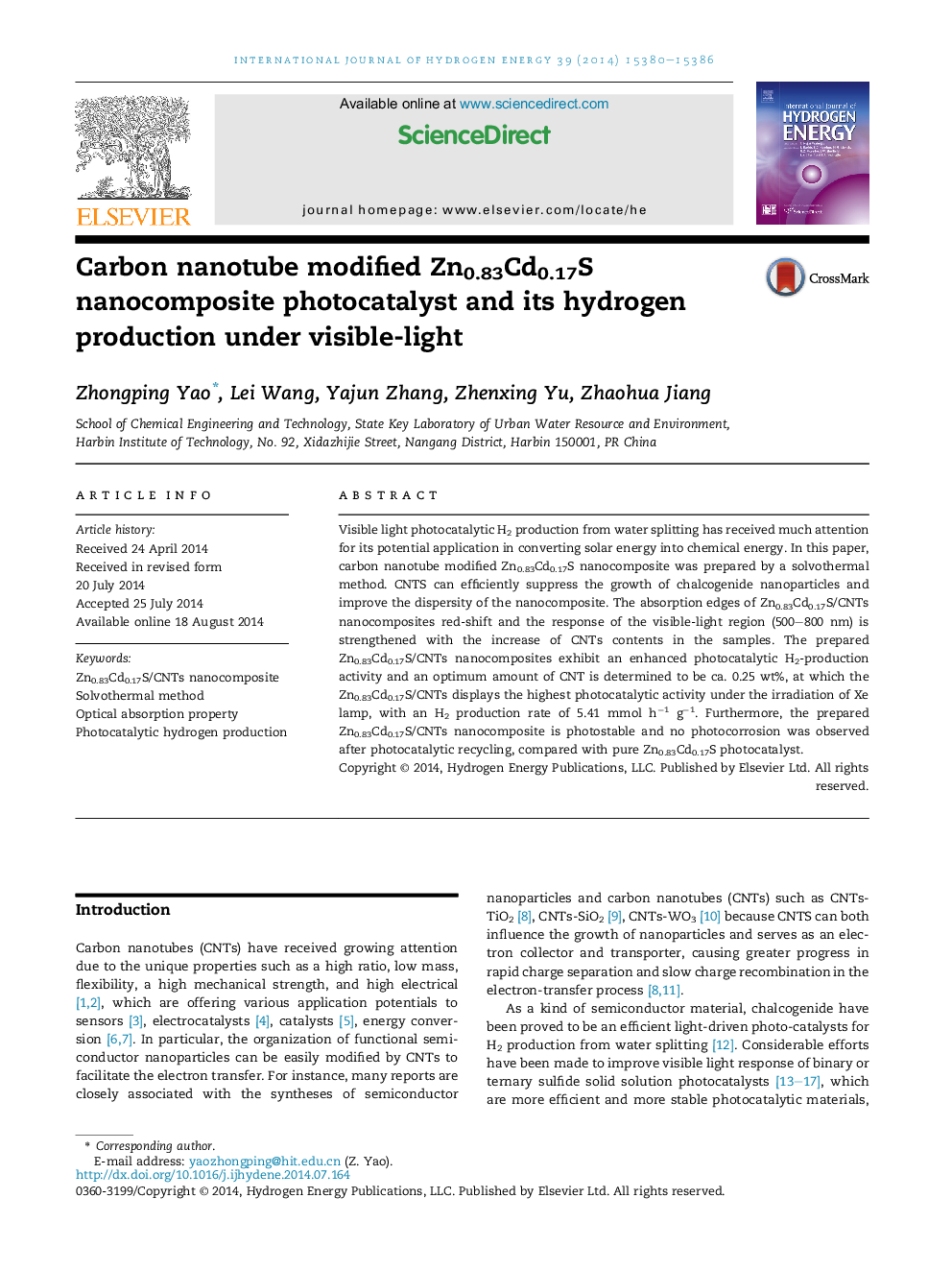| Article ID | Journal | Published Year | Pages | File Type |
|---|---|---|---|---|
| 1272374 | International Journal of Hydrogen Energy | 2014 | 7 Pages |
•CNTs can decrease the size of Zn0.83Cd0.17S nanocomposites and improve the dispersity.•The absorption edges of Zn0.83Cd0.17S/CNTs red-shift with the increase of CNTs content.•S/C-2 sample shows the highest H2 production rate of 5.41 mmol h−1 g−1.•CNTs increase the photostability of Zn0.83Cd0.17S after photocatalytic recycling.
Visible light photocatalytic H2 production from water splitting has received much attention for its potential application in converting solar energy into chemical energy. In this paper, carbon nanotube modified Zn0.83Cd0.17S nanocomposite was prepared by a solvothermal method. CNTS can efficiently suppress the growth of chalcogenide nanoparticles and improve the dispersity of the nanocomposite. The absorption edges of Zn0.83Cd0.17S/CNTs nanocomposites red-shift and the response of the visible-light region (500–800 nm) is strengthened with the increase of CNTs contents in the samples. The prepared Zn0.83Cd0.17S/CNTs nanocomposites exhibit an enhanced photocatalytic H2-production activity and an optimum amount of CNT is determined to be ca. 0.25 wt%, at which the Zn0.83Cd0.17S/CNTs displays the highest photocatalytic activity under the irradiation of Xe lamp, with an H2 production rate of 5.41 mmol h−1 g−1. Furthermore, the prepared Zn0.83Cd0.17S/CNTs nanocomposite is photostable and no photocorrosion was observed after photocatalytic recycling, compared with pure Zn0.83Cd0.17S photocatalyst.
